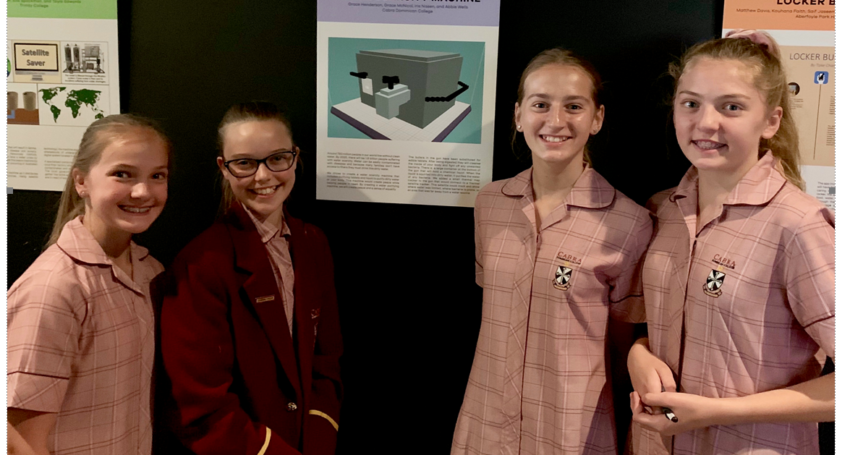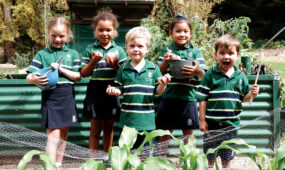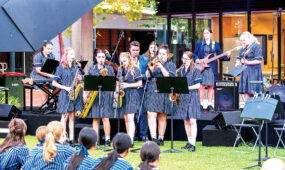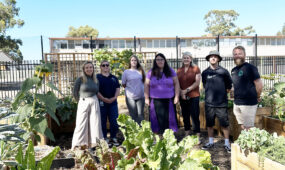Giving peace a chance
Schools
A drone that detects people who are being ‘helpful and good’, a microchip implanted at birth to record kind deeds and a device that purifies dirty water – these were just some of the creative ideas for ‘peace machines’ currently on display in Adelaide.

As part of the ‘Waging Peace’ exhibition now open at the Mod. Museum, students throughout South Australia were asked to design a peace machine using Makers Empire software.
Students at Cabra Dominican College were keen to take part in the STEM-based project and came up with some diverse and imaginative answers to the question, ‘What could a peace machine look like?’
“This was a project that recognised the resourceful problem solving thinking of the Year 7 children involved,” said teacher Fiona Graff who worked with the students in developing their designs.
Advertisement
“It was about getting the children to think about peace and the Common Good and upon reflection, I think the best part was that those who were selected to have their work displayed were so varied in their contemplative and academic capacity.
“Structuring teaching and learning within a project-based pedagogy captures not just the traditional ‘academic’ learners, but the children who are innovative, imaginative and inventive in their thinking…the future problem solvers in our world,” she added.
Using Maker’s Empire – a software program using 3D design and printing – the Cabra students were encouraged to solve real world problems by looking at the concept of peace, and in small groups or individually, then designed a machine they felt would help the peace process. Machines could be no bigger than 1.5m cubed and weigh less than 25kg.
“The students explored the idea of the rights of the individual to personal possessions and community resources being balanced with the needs of the disadvantaged and dispossessed. This was particularly evident in our research into countries deeply affected by water scarcity.
Designing a machine of peace reinforced this theme perfectly,” Ms Graff said.
Some of the machines were selected to be part of the exhibition. They included a ‘peace drone’ which would fly around the community and find people who were helping others, recording them as doing a random act of kindness.
Advertisement
Designed by Jonti Fisher, Sean Gerner and Nathaniel Steinhert, the peace drone would also have a counterpart drone which would detect people ‘making bad choices’, sending a dose of endorphins to the perpetrator to encourage better behaviour.
Water scarcity provided the incentive for the design of the machine created by Grace Henderson, Grace McNicol, Iris Nissen and Abbie Wells. This machine included a liquid that would clean dirty water and tablets that could be digested to clean the inside of your body, fighting off unwanted bacteria.
Elisabeth Green’s peace machine, ‘Houser 2000’, was a 3D printer that could create “sustainable emergency, temporary housing for homeless people and in particular in refugee camps”.
“The printer makes a little caravan-type house with beds (bunk beds to use the space well), toilet, basic kitchen and storage structures to accommodate three people,” Elisabeth explained.
The Kindness Credit Microchip, developed by Patrick Gilson and Jack Ryan, was designed to be implanted at birth to detect a person’s good deeds and dispense kindness credits.
“In a moneyless society, these credits are now the currency and are allocated the same status as money. This currency not only promotes kind actions and behaviour but enables the purchasing of peoples’ needs and wants,” the boys said.
The Waging Peace exhibition is open until April at the Mod. Museum, located on North Terrace adjacent the Morphett Street Bridge.








Comments
Show comments Hide comments